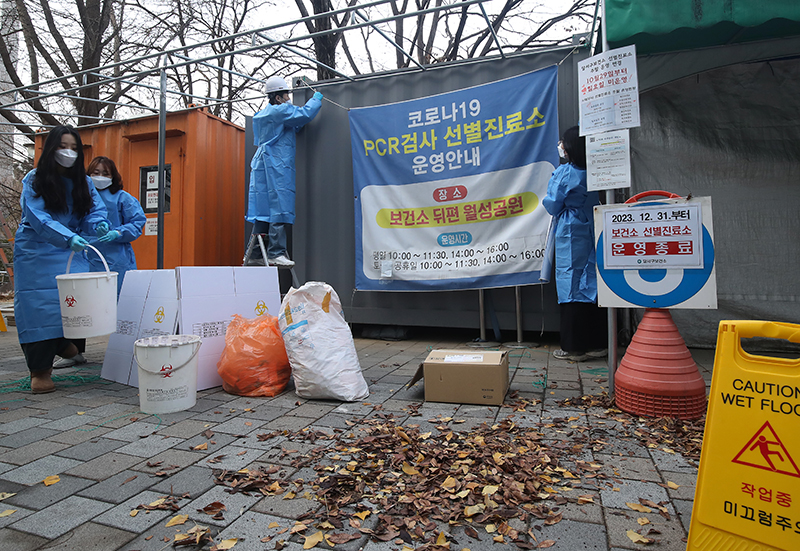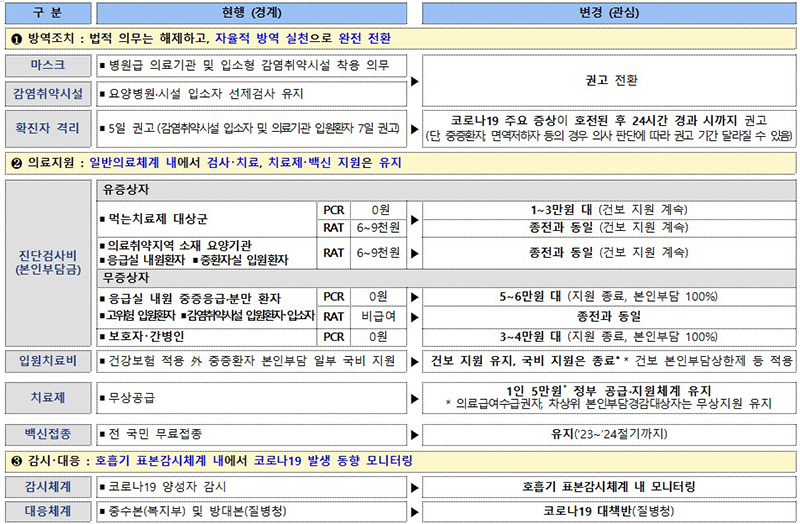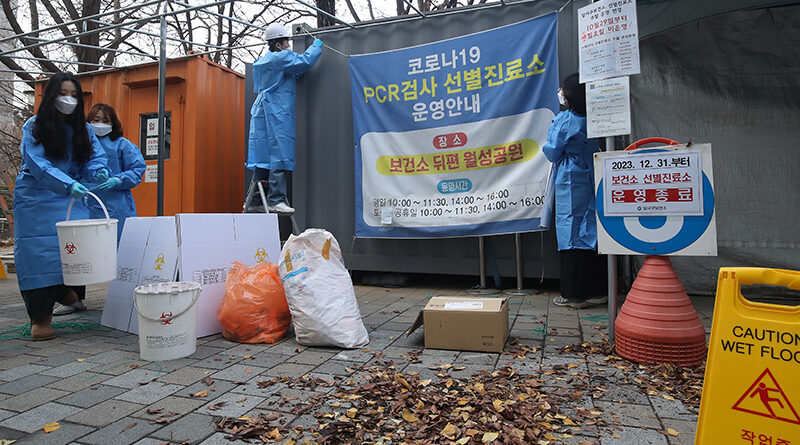Starting in May, wearing masks in hospital-level medical institutions will be changed to a ‘recommendation’.

The government has decided to change the obligation to wear masks indoors at hospital-level medical institutions and inpatient infection-vulnerable facilities to a recommendation starting May 1.
In addition, the obligation to preemptively test residents of facilities vulnerable to infection has been changed to a recommendation to be the same as that of workers and guardians (caregivers) of facilities vulnerable to infection, thereby easing the use of masks and preemptive testing in preparation for COVID-19.
Some of the quarantine measures that were previously mandatory are now recommendations, and the standards for recommending isolation of confirmed cases have also been relaxed to a level similar to that of influenza, allowing patients to return to their daily lives after examining the progress for about a day if there are no problems.
The COVID-19 Central Accident Control Headquarters discussed on the 19th the ‘Plan to Downgrade the COVID-19 Crisis Level’ and decided to lower the COVID-19 crisis level from ‘Alert’ to ‘Concern’ and apply it as such.
However, in consideration of the quarantine situation where asymptomatic screening is not necessary, support for test fees for asymptomatic people will also end, but free support for medical treatment will be maintained for medical benefit recipients (types 1 and 2) and those eligible for a reduction in out-of-pocket costs in order to protect high-risk groups.
This crisis level downgrade took into account the fact that the number of confirmed cases has significantly decreased, no mutations that could cause a surge in the epidemic in the short term have been identified, and the fact that the fatality and severity rates of COVID-19 continue to decrease.
In addition, as most countries, including the United States and Japan, have lifted their emergency response systems, Korea has also decided to change the quarantine measures, medical support, and surveillance/response system sectors to the ‘concern’ level in accordance with this downward adjustment.
◆ Quarantine measures
First, the standard for recommending isolation of confirmed cases is further relaxed from the existing ‘recommendation of 5 days from the date of sample collection’ to ‘until 24 hours after the main symptoms of COVID-19, such as cough and fever, have improved.’
This takes into account the fact that the risk assessment of COVID-19 was found to be ‘low’ at the crisis assessment meeting held on the 15th, and that the fatality and severity rates of COVID-19 continued to fall, lowering the risk of the disease.
Meanwhile, many foreign countries, including the UK and Spain, do not provide a separate quarantine recommendation period, and the US CDC recently announced guidelines that relaxed the existing 5-day recommendation to 24 hours after no fever and symptoms have improved.
Accordingly, in Korea, patients confirmed with COVID-19 will be able to return to their daily lives even if it has not been 5 days since the diagnosis if there are no abnormalities after checking for a day after the main symptoms have improved.
However, quarantine authorities emphasized that this easing of quarantine recommendations does not mean that quarantine and rest are not necessary, adding that a culture of resting when sick must be established in our society.
◆ Medical support
The medical support system aims to be incorporated into the general medical system at the same level as the seasonal flu, but as a transitional step, it will be adjusted to minimize the burden of testing and treatment costs to protect high-risk groups.
Accordingly, support for COVID-19 testing fees for asymptomatic people will end, but rapid antigen testing will be provided for symptomatic patients, such as those who are taking oral treatment, such as the elderly over 60 years old, nursing homes in medically underserved areas, patients visiting emergency rooms, and patients admitted to intensive care units. maintain.
PCR testing for confirmation of the group eligible for oral treatment is covered by health insurance, but the temporary out-of-pocket support will end.
For hospitalization treatment expenses, health insurance will continue to be applied, but government support for some seriously ill patients will end. However, the burden is minimized through the out-of-pocket limit system.
In the case of treatments such as Paxrovid, which are supported for high-risk groups for COVID-19, the registration process for health insurance coverage is in progress, but some out-of-pocket costs are calculated during the transition period before registration.
The price of the three types of treatments is 50,000 won, which is about 5% of the weighted average drug price depending on the frequency of use, but free support is maintained for medical benefit recipients and those in the next lowest tier of out-of-pocket reduction.
In particular, as the crisis level is lowered, it is necessary to impose out-of-pocket expenses like other level 4 infectious diseases, and it has been decided to impose the minimum amount until registration with health insurance.
As before, prescriptions and dispensing of treatments are carried out at pharmacies and medical institutions designated as institutions in charge of COVID-19 treatment, and the list of institutions in charge can be found in the COVID-19 treatment section of the Infectious Disease Portal.
Meanwhile, free vaccination will be maintained for all citizens only until the 2023-2024 vaccination season, and starting with the 2024-2025 vaccination season, free vaccination will be provided only to high-risk groups such as the elderly over 65 years old and those with weakened immune systems.
◆ Monitoring and response system
In the future, the outbreak trend of COVID-19, along with other respiratory infectious diseases such as influenza, will be monitored through the respiratory specimen surveillance system.
Accordingly, the COVID-19 positive patient surveillance system that was temporarily operated during the COVID-19 alert phase will be terminated, and the COVID-19 sample surveillance status can be checked through the infectious disease sample surveillance weekly newsletter posted every Thursday in the infectious disease news section of the infectious disease portal.
In addition, the Central Accident Control Headquarters (Ministry of Health and Welfare) and the Central Disaster and Safety Countermeasures Headquarters (Korea Disease Control and Prevention Agency), which had been established since January 2020, will cease operation.
However, the Korea Disease Control and Prevention Agency decided to continue responding to COVID-19 up to the ‘attention’ level by operating a COVID-19 task force.

Ji Young-mi, head of the Korea Centers for Disease Control and Prevention (KDCA), emphasized, “This time, the crisis level has been lowered to attention and the quarantine of confirmed COVID-19 patients has been eased, but the culture of resting when sick is a culture that is absolutely necessary for our society,” and “In the future, COVID-19 symptoms will continue to increase.” “If you have any, please visit a nearby medical institution to receive treatment and follow personal quarantine rules in daily life, such as hand washing and cough etiquette.”
Editor James








